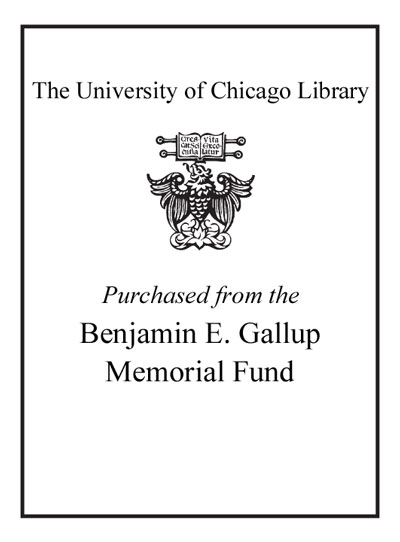Review by Booklist Review
Former writer and editor for Vogue and Mademoiselle, Cantwell locates her memories of work, friends, marriage, and motherhood in the places where she's dwelled. Five Manhattan apartments act as mental guide in retracing the footsteps of her past. From neurosis and near anorexia to the awe of her first Paris trip, Cantwell's memoir speaks intimately, honestly, and in a generous way that makes readers feel as though they were listening to a personal account retold only for them. Her earlier work, American Girl: Scenes from a Small-Town Childhood (1992), garnered attention and praise for the strength of its language, choice of details, and resonance of subject matter. This book, too, has all that plus Manhattan's eloquence in the 1950s and 1960s. Although this chronicle could easily succumb to politically correct revisions of the past or become a sentimental trip down memory lane, Cantwell avoids those pitfalls through sincerity--a true attempt to recall accurately and learn from her past. Somewhat literary, offering a little superficial fashion world "glam" and New York savvy, this book should appeal to many different kinds of readers. --Janet St. John
From Booklist, Copyright (c) American Library Association. Used with permission.
Review by Publisher's Weekly Review
New York Times editor Cantwell recalls the triumphs and tribulations of her early adulthood in Greenwich Village of the '50s and '60s. (Oct.) (c) Copyright PWxyz, LLC. All rights reserved
(c) Copyright PWxyz, LLC. All rights reserved
Review by Library Journal Review
Like Willie Morris's New York Days (LJ 8/93), Cantwell's follow-up to American Girl (LJ 4/1/92) evokes a place and time experienced vividly in youth and remembered fondly in maturity. While Morris recalls a turbulent 1960s New York City, full of noise and ego, Cantwell's memories of Manhattan in the 1950s and early 1960s are quieter, more intimate, but no less romantic or powerful. She divides her memoir into five sections, each connected to an address where she had once lived. From 148 Waverly Place where Cantwell and her college roommate struggled to survive their first year in New York as single working girls (shades of My Sister Eileen and those other wonderful 1950s "career gal" movies) to 44 Jane Street, which witnessed the dissolution of her marriage and the launch of her editorial career at Mademoiselle, Cantwell reflects on the changes that affected not only her life but also her city. Beautifully written, strongly recommended. [Previewed in Prepub Alert, LJ 5/1/95.]Wilda Williams, "Library Journal" (c) Copyright 2010. Library Journals LLC, a wholly owned subsidiary of Media Source, Inc. No redistribution permitted.
(c) Copyright Library Journals LLC, a wholly owned subsidiary of Media Source, Inc. No redistribution permitted.
Review by School Library Journal Review
YAAn easy-to-read autobiographical account of a fashion-magazine writer in the 1950s. Fresh out of college, Cantwell arrived in Greenwich Village and shared an apartment with a friend. Despite all the flair of metropolitan life, experiences with high-style department stores, exclusive little shops, theaters, parties, restaurant outings, and even a romance and marriage, she became increasingly depressed. Her close ties to a lovingly encouraging father were broken by his early death. She details the passsage of years by describing the flats, houses, and apartments she lived in and the jobs lost and gained in her career pursuit. Despite Cantwell's lifelong involvement with psychoanalysis, her account is enlivened with the cheerful glamor of little black dresses, Steuben glassware, ethnic neighborhoods, and the whole ambiance of the city, presenting anew the eternal charm of the Big Apple for the young.Frances Reiher, King's Park Library, Fairfax, VA (c) Copyright 2010. Library Journals LLC, a wholly owned subsidiary of Media Source, Inc. No redistribution permitted.
(c) Copyright Library Journals LLC, a wholly owned subsidiary of Media Source, Inc. No redistribution permitted.
Review by Kirkus Book Review
This pleasant memoir of the 1950s and '60s is an ode to Manhattan's unique brand of chaotic energy, by one of the island's adopted daughters. Manhattan was the Emerald City for Cantwell, who told of her New Hampshire childhood in An American Girl (1992). Cantwell is a committed denizen of Greenwich Village (``not because of what the Village is but because of what I have made it'') from the moment she arrives as a hope-filled graduate of Connecticut College. Her series of Village residences form the framework for this quiet, occasionally humorous, occasionally painful tale, the objective correlative of her passing from single aspiring writer to young married, mother, and divorced career woman (she is now an editorial board member of the New York Times). Cantwell is remarkably tolerant of her youthful selfher New York pretensions, her social anxietiesand even of her husband, a high-flying literary agent who left her (with two children) for his secretary. Cantwell's joysthe pleasure she takes in turning out fashion copy for Mademoiselle, meeting Alice B. Toklas in Paris with her husbandare laced with unhappinessthe inability to form an identity apart from her husband, her suicidal madness after the birth of her first daughter. With admirable restraint, Cantwell spares us the endless emotional navel-gazing (and feminist cant) that often afflicts such memoirs of self-discovery (or self-invention). At the same time, however, it deprives her tale of juice. Her colleagues at Mademoiselle and later Vogue are mere sketches; and she seems to accept unquestioningly the apparently sudden and full resolution of various emotional difficulties (e.g., her profound discomfort with sex disappears once she discovers ``what it is for,'' i.e., making babies). One longs to know what her warm, patient psychiatrist, Dr. Franklin, thought of these episodes. Still, Cantwell's lovely prose and passions for Manhattan, motherhood, and work will resonate for many women.
Copyright (c) Kirkus Reviews, used with permission.
Review by Booklist Review
Review by Publisher's Weekly Review
Review by Library Journal Review
Review by School Library Journal Review
Review by Kirkus Book Review

